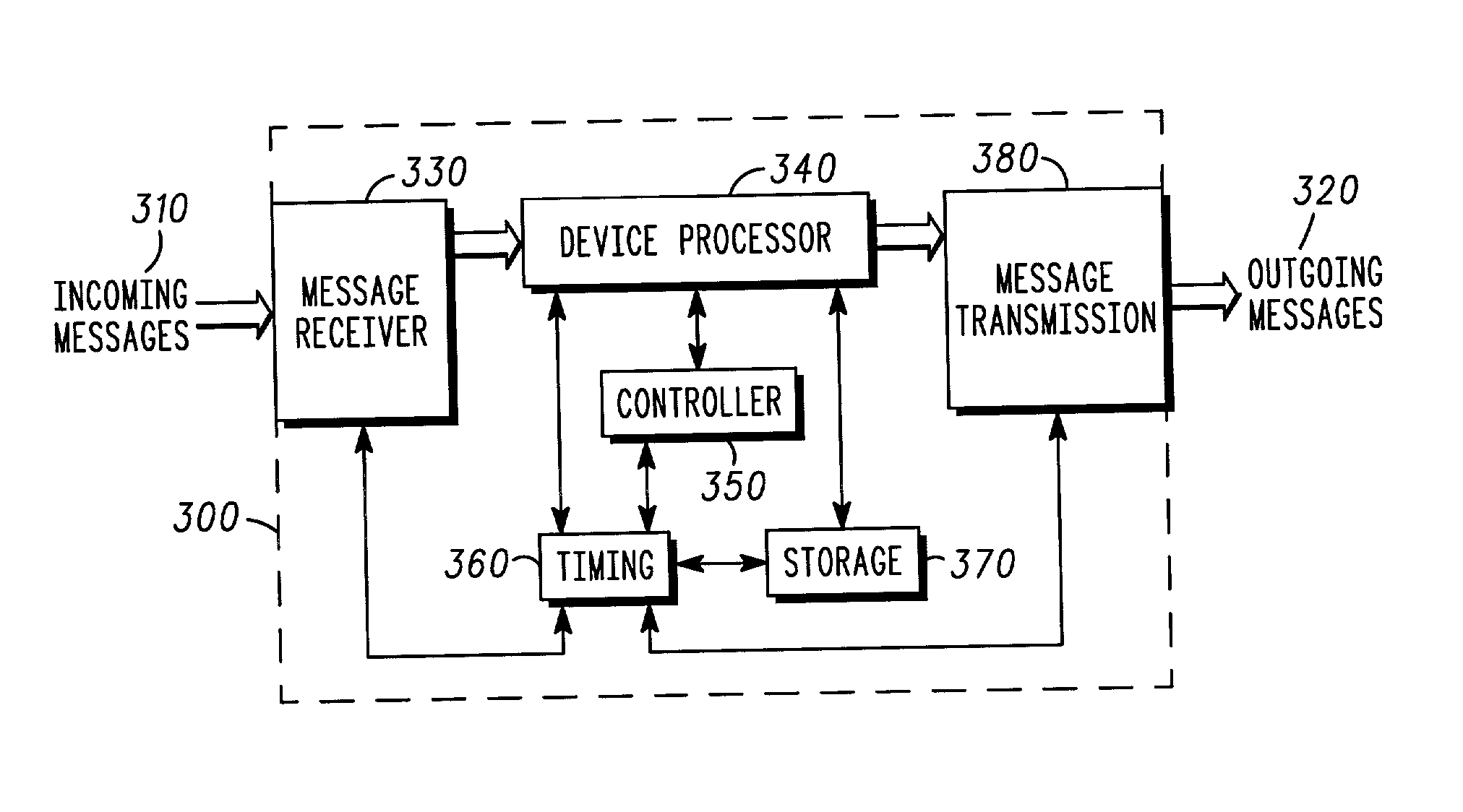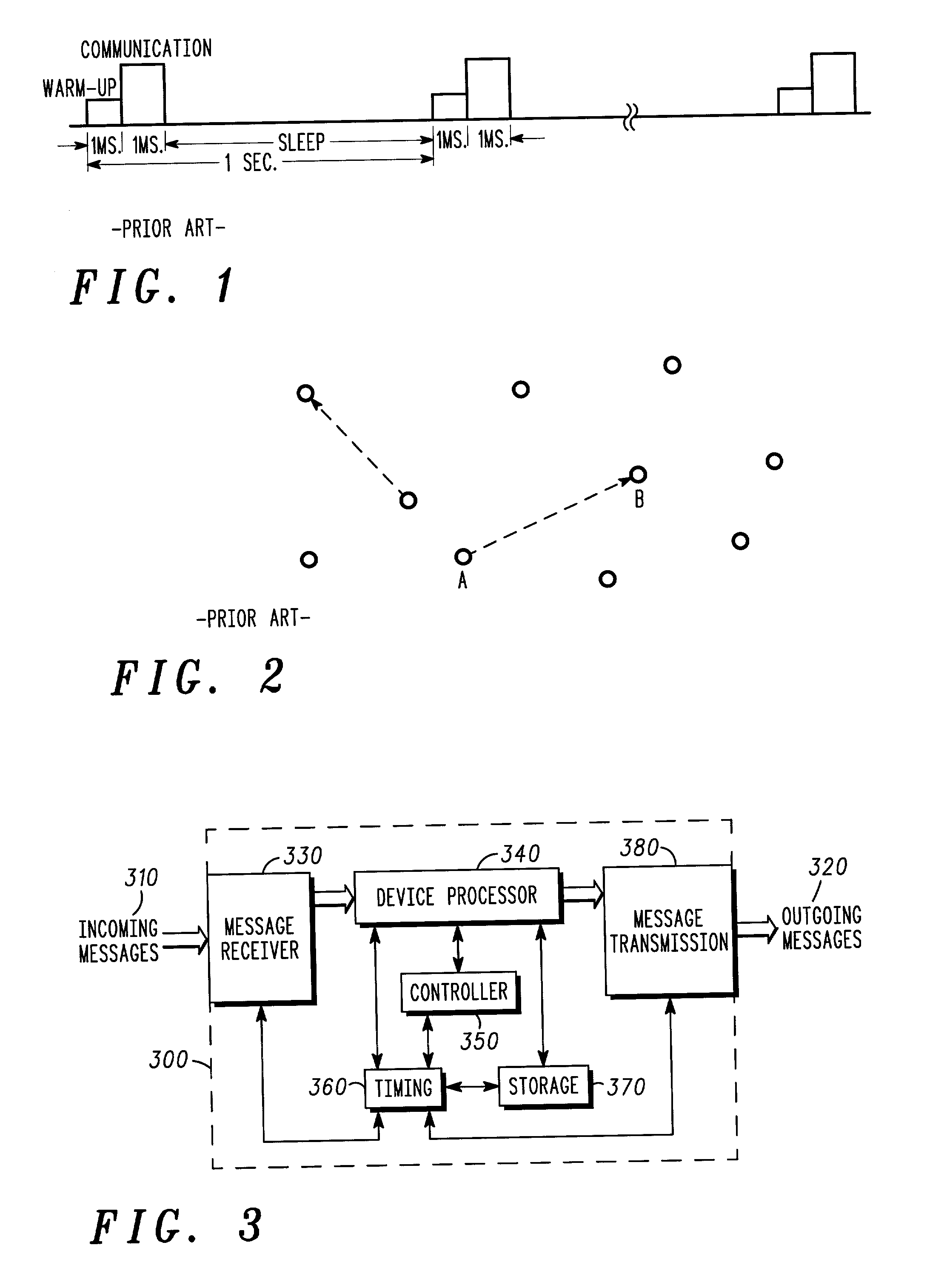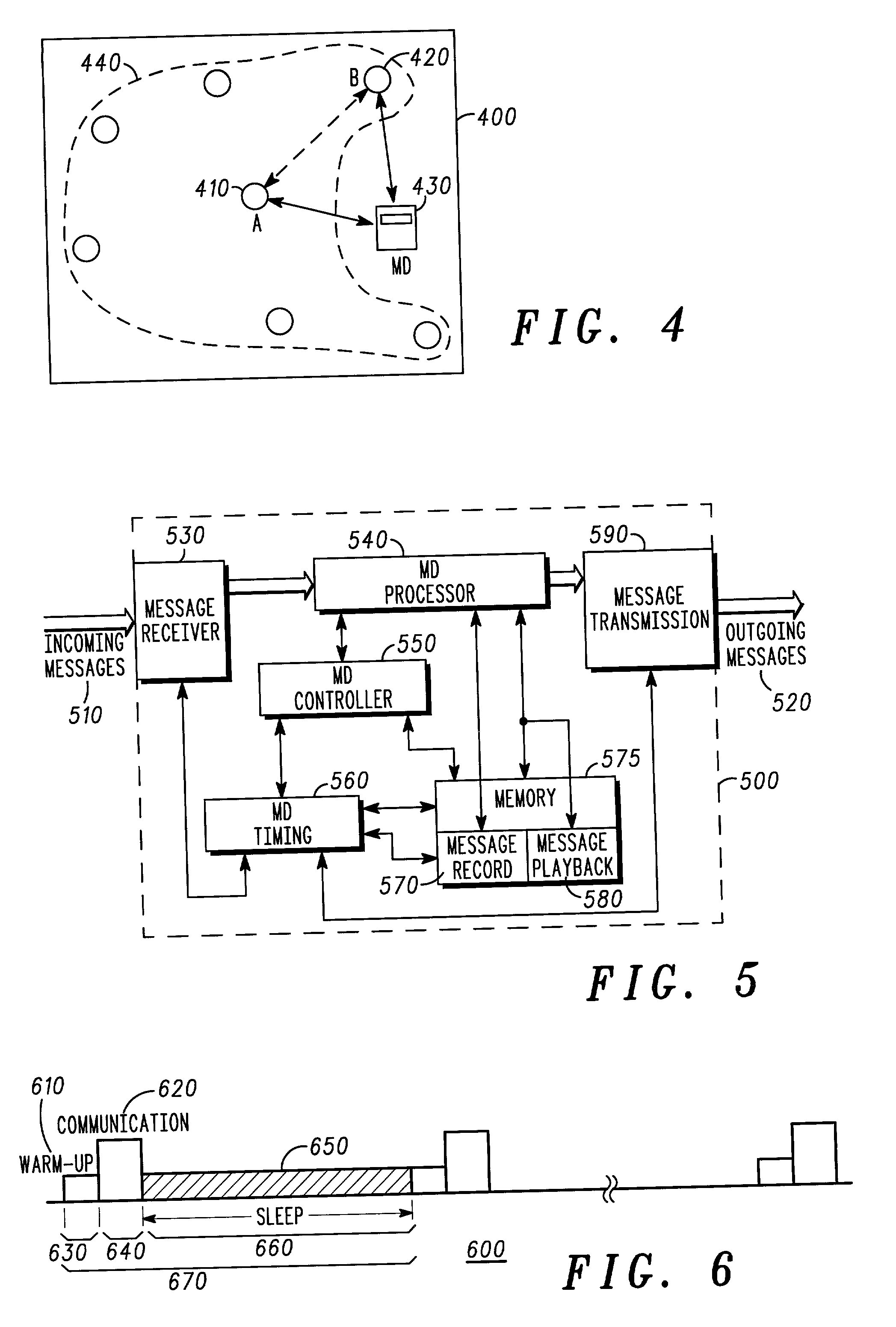Multiple access protocol and structure for communication devices in an asynchronous network
a communication device and asynchronous network technology, applied in the field of communication networks, can solve the problems of infrequent communication between a transmitter and a destined receiver, power consumption and cost, and reduced availability of devices,
- Summary
- Abstract
- Description
- Claims
- Application Information
AI Technical Summary
Benefits of technology
Problems solved by technology
Method used
Image
Examples
first embodiment
[0039] The present invention discloses a method and structure for a low power consumption protocol for low power wireless devices attached to an asynchronous network. Referring to FIG. 4, a simplified representation of a network 400 containing a plethora 440 of low power communication devices 410 and a dedicated MD 430 is shown, according to the present invention. Each of the low power communication devices 410 of network 400 has a low communication duty cycle and must therefore rely upon dedicated MD 430 for reliable communication. Dedicated MD 430 has a high communication duty cycle in comparison to the non-MD low power devices 410, and can store messages destined for any of low power wireless devices 410 within the group 440.
[0040] Referring now to FIG. 5, a system level block diagram 500 of the internal operation of a dedicated MD device 430 is shown. The dedicated MD device 430 is capable of sending and receiving several types of messages, including the source communication dev...
second embodiment
[0046] Instead of using dedicated MD 930, the functionality of a MD may be coupled to each of the plethora 440 of low power communication devices. Referring now to FIG. 13, a network 1300 containing a plethora of low power communication devices is shown, according to the present invention. Each low power communication device of the low power communication devices can function as MD. In FIG. 13, low power communication device 1330 is functioning as a MD. Note that low power communication device 1330 is not a dedicated MD 930. The low power communication device of the low power communication devices that will function as MD is selected at random.
[0047] There are several approaches that may be used to select the next MD. The MD could be selected at random when the low power communications device acting as MD is not able to act as MD any longer. If each MD uses a randomly generated initial phase offset t0, then the distribution of MD functionality across the low power communication devi...
third embodiment
[0059] Referring to FIG. 23, a multiple access scheme in which N communication devices 2310 are in the network, according to the present invention. Each communication device of the N communication devices is constrained to receive and transmit information within a window 2320 of duration Tw seconds. Duration Tw is selected from the size of the network as determined by the number of communication devices in the network.
[0060] For example, for a network with five communication devices operating within a t1 period of 1000 seconds, the average latency is 200 seconds. If the communication cycle t1 is reduced to 300 seconds, the average latency is reduced by a factor of three. If the duration Tw of window 2320 is smaller than the communication period of the communication device, the duration of the communication period must be reduced to fit within window 2320. Reducing the duration of the communication period increases the likelihood of communication devices moving out of communication r...
PUM
 Login to View More
Login to View More Abstract
Description
Claims
Application Information
 Login to View More
Login to View More - R&D
- Intellectual Property
- Life Sciences
- Materials
- Tech Scout
- Unparalleled Data Quality
- Higher Quality Content
- 60% Fewer Hallucinations
Browse by: Latest US Patents, China's latest patents, Technical Efficacy Thesaurus, Application Domain, Technology Topic, Popular Technical Reports.
© 2025 PatSnap. All rights reserved.Legal|Privacy policy|Modern Slavery Act Transparency Statement|Sitemap|About US| Contact US: help@patsnap.com



